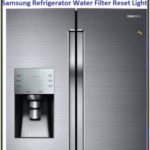Dryer Wiring Diagram Color How to Install Dryer Cords
Dryer Wiring Diagram Color How to Install Dryer Cords With 3 & 4 Wires At 240 Volts
Dryer Wiring Diagram Color Before installing the cord, it’s crucial to turn off all electrical power. Serious harm or even death may ensue from coming into contact with 240 volts. This video’s first segment will cover the installation of four wire cords, and its second segment will cover the installation of three wire cords.

YOU MAY ALSO WATCH THIS VIDEO
As we can see, the three-wire cord is not color-coded, while the four-wire cord is. Ground is represented by the green wire on the four-wire cord. L1, or line one, is black. White is a neutral colour. Line two, or L2, is red. The three-wire cord’s centre wire, which is neutral, must always be put in the terminal block’s middle. Line one is the left-side outside wire, while line two is the right-side outer wire.
The one-quarter inch screw holding the terminal block cover in place should be removed using a quarter-inch nut driver. The wire terminals’ three-quarter-inch screws holding them to the terminal block must then be removed.
.Remove the five-sixteenths-inch screw holding the neutral wire to the cabinet next using a five-sixteenths-inch nut driver. In order for the neutral wire to pass underneath the terminal block, move it to the right. The four-wire cord is shown below. We’ll refer to L1 (or line 1) as our black wire. Red is L2, or line two, while green wire connects to the ground. White is neutral. Before lining up the wire ends with the terminal block, feed the cord through the cabinet’s opening. Then connect the two neutral wires to the terminal block by bringing them together.
It is critical to realise that the screws included with the terminal block are the only ones that can be used because they are threaded exclusively for the terminal block. After that, connect lines one and two to the terminal block. Once more, the black wire denotes line 1 and the red wire denotes line 2.
You may have noticed that occasionally during this process I turned the nut driver counterclockwise before turning it clockwise. This will ensure that the threads on the screws and the nuts to which they are secured in the terminal block are properly aligned. The screw and the nut it fastens to will both need to be replaced if any cross threading occurs during this process.
Install the green ground wire to the cabinet next using the five-sixteenths-inch screw that was once used to secure the white neutral wire. Put the strain relief in place after softly tucking the cord into the cabinet. The strain relief must be implemented according to the law in various states. Its goal is to stop sloppy connections and prevent negative effects like dryer fires. The two Phillips head screws that came with the strain relief should be used to fasten it once it has been placed. Verify that the strain relief is firmly clamped to the cord’s outer, black insulation. Make sure to put the terminal block cover back on once you’re done.
The terminal block cover’s one-quarter-inch screw needs to be removed using a quarter-inch nut driver. In order to free the wire terminals from the terminal block, first remove the three-quarter-inch screws holding them in place. The central wire’s designation as neutral is clearly visible in this picture. Align the terminal block with the cabinet’s cord before inserting the cord. In the terminal block, neutral always travels to the centre. Connect the neutral wire securely to the terminal block. The screws are properly threaded for the terminal block, which should once again be understood.
Cross-threading is avoided by aligning the threads by twisting the screws counterclockwise before turning them clockwise. If there is any cross-threading, both the screw and the nut it is secured to within the terminal block will need to be changed.
The two outer wires stand for lines one and two. They are permanently fastened to the terminal block’s black and red wires. Attach the strain relief as directed in the four wire portion once the cord has been placed. This installation is mandated by law in numerous places. Its goal is to stop sloppy connections and associated problems, like dryer fires. With the two Phillips head screws that came with it, the strain relief can be fastened.
Replace the terminal block cover after finishing.
YOU MAY ALSO READ THIS
- Wire Color Code Chart – Electrical Wire Color Codes
- What Is Comprehensive Insurance?
- Can You Wash Whites With Colors If I Use Cold WateR
- How To Replace A Circuit Breaker
- Bathroom Drain Pipe is Leaking How to Fix What to Check
- Ballu Air Conditioner Error Code







